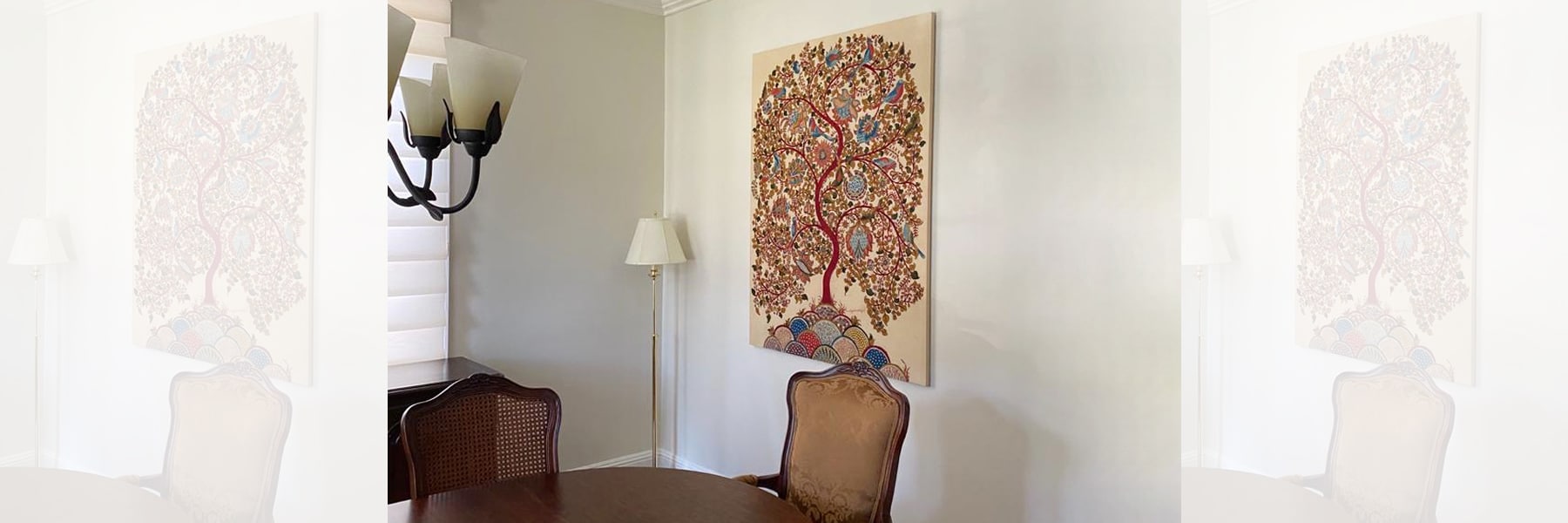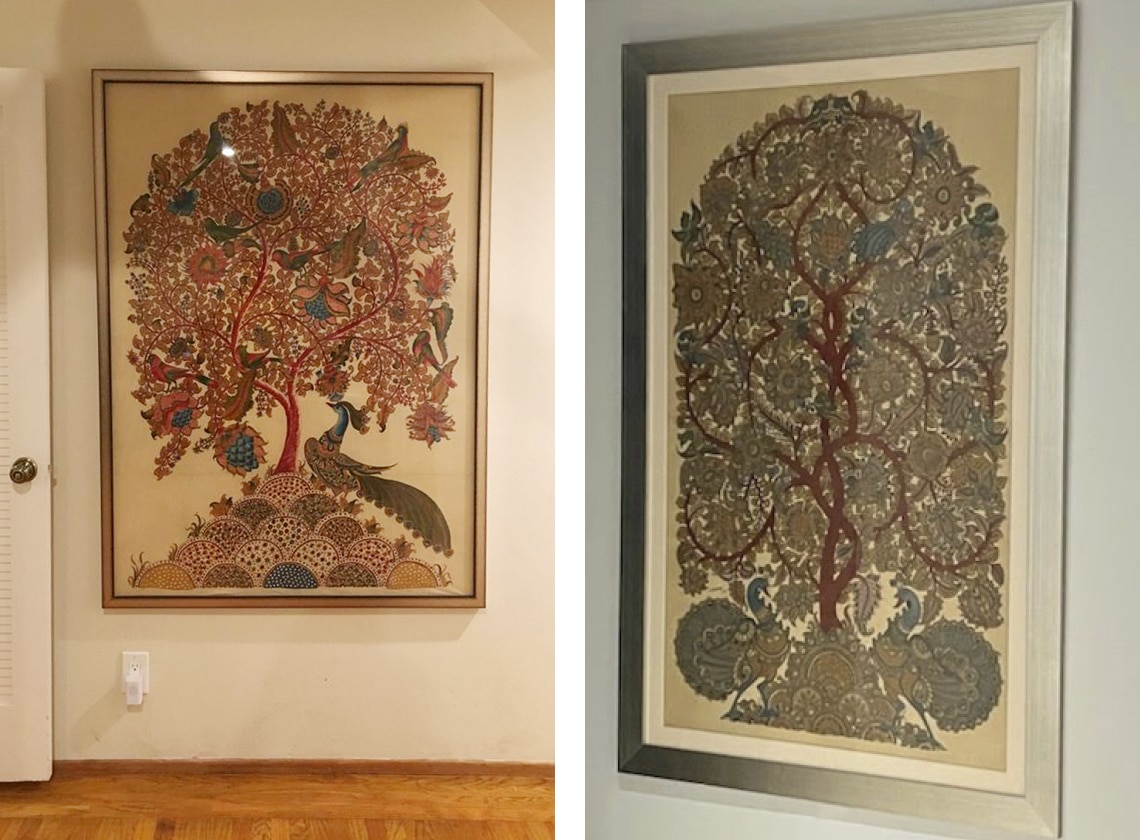
HOW TO FRAME CLOTH PAINTINGS
Many traditional Indian art forms consist of painting with inks and dyes onto treated cloth, including Kalamkari art and Pichwai paintings. Here at Laasya Art, clients frequently ask how to frame such textile artworks.
Here are a few guidelines on framing cloth paintings.
HOW TO FRAME PAINTINGS ON CLOTH: THREE OPTIONS

Option 1: Stretching Only
Much like paintings on canvas, cloth paintings need to be stretched. They also need to be supported at the back with museum board, as traditional textiles are typically thinner than the linen or canvas used for contemporary paintings. Simply stretching the cloth offers a clean look and is the most cost-effective option.

Option 2: Stretching and Framing
After stretching the cloth, you can add a frame for an elegant, finished touch. A frame can also help integrate the artwork with your home decor. For example, you can modernize a traditional artwork with a metal frame or emphasize the tone of its natural dyes with a wooden frame.

Option 3: Stretching, Framing and Glass
To add a layer of protection against dust, some clients choose to enclose their cloth artwork with glass. However, this is not a top concern for homes in the United States, and the layer of glass can take away from the viewer’s intimacy with the painting.
Once the cloth painting is stretched, there is no right or wrong decision regarding a frame or glass. Just like choosing a frame for a canvas, it is a matter of personal aesthetic preference and any budgetary constraints.
We hope these tips help you frame your painting on cloth! For more framing guidelines, please visit our blog on tips for how to frame paintings or how to frame fine art prints.
— Sonia Patwardhan

Leave a Reply
You must be logged in to post a comment.